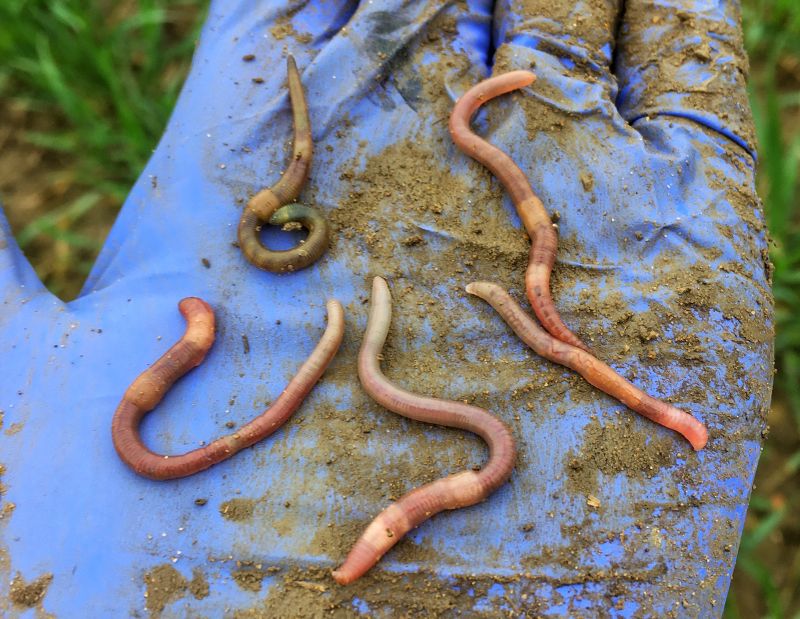
Farmers are helping reverse a decline in key earthworm types on their land by making changes to their soil management practices.
A study of England’s farmland has found earthworms are rare or absent in two out of five fields and has led to the majority of farmers affected vowing to change their practices.
The #60minworms project was the first comprehensive worm survey concentrating solely on farmland and was carried out by farmers themselves.
Fifty-seven percent of farmers who conducted the survey said they would now change their soil management practices as a result.
The scientist behind the survey, Dr Jackie Stroud, of Rothamsted Research, said: “Earthworms are sensitive and responsive to soil management which makes them an ideal soil health indicator.
“The aim of this research was to find a baseline of farmland earthworm populations that would be useful and used by farmers to assess soil health now and in the future.”
'Ecosystem services'
Biologists categorise earthworms by ecological role - with surface dwelling and deep burrowing worms the types most sensitive to farming practices, whilst the topsoil worms are generally unaffected by over-cultivation.
Earthworms perform a number of useful ‘ecosystem services’, and high numbers of earthworms have been linked to enhanced plant productivity.
This study revealed most fields have good earthworm biodiversity – meaning an abundance of all three types of earthworms were seen.
In spring 2018, the average field had 9 earthworms in every spadeful of soil, with top fields having three times that number. One in 10 fields had high earthworm numbers of more than 16 worms per spadeful.
However, the study also revealed that 42 percent of fields had poor earthworm biodiversity – meaning either very few or none of the surface dwelling and deep burrowing worms were seen.
'Concerning'
The absence of deep burrowing worms on 16 percent of fields is 'concerning', said Dr Stroud, because they are 'drainage worms' with vertical burrows that aid water infiltration and ultimately helps combat waterlogging.
“The deep burrowing worms have slow reproduction rates so recovery in their populations could take a decade under changed management practices. In fact, we know very little about earthworm recovery rates,” he said.
More than 1300 hectares were surveyed from all over England for the project, including fields managed under arable, potatoes, horticulture and pasture.
Each farmer volunteered to dig 10 regularly spaced pits across their field to make the observations, and an identification guide allowed them to allocate any sightings to one of the three main types of earthworm.
Empowering farmers to survey their own soils would save about £14 million in soil health monitoring if rolled out nationally, she added.
Soil health
However, healthy soils were not a headline indicator for the draft Defra 25-year plan for the environment, so the department's policy aspiration of achieving sustainable soils is currently unclear.
Despite this, soil health is widely regarded as vital for both farming and the environment.
Dr Stroud said: “Decisions made above the ground, whether by farmers or policy makers, influence the billions of earthworms that are engineering the soil ecosystem below the ground.
“Earthworms influence carbon cycling, water infiltration, pesticide movement, greenhouse gas emissions, plant productivity, the breeding success of birds and even the susceptibility of plants to insect attack.”
However, she added, as earthworms are sensitive to various farming practices, including tillage, rotations, cover cropping, organic matter additions, and pesticides, more needs to be done to look after them.
“Crucially, working together with farmers, we now know typical earthworm numbers in agricultural soils and between us have developed a quick method for ongoing monitoring.
“Many farmers have reported they plan to survey again this spring following benchmarking their fields last year,” she said.
